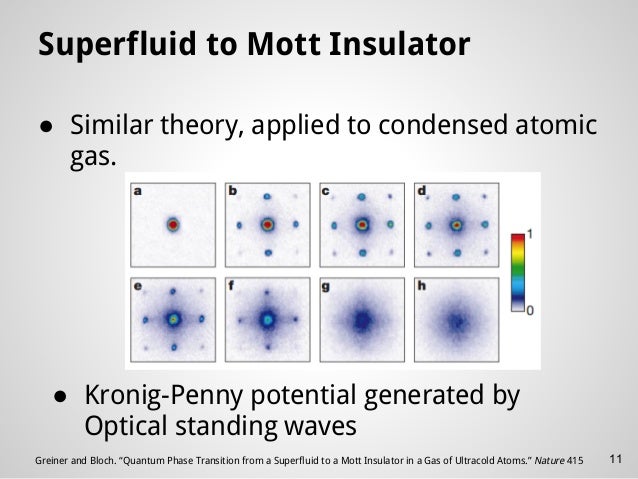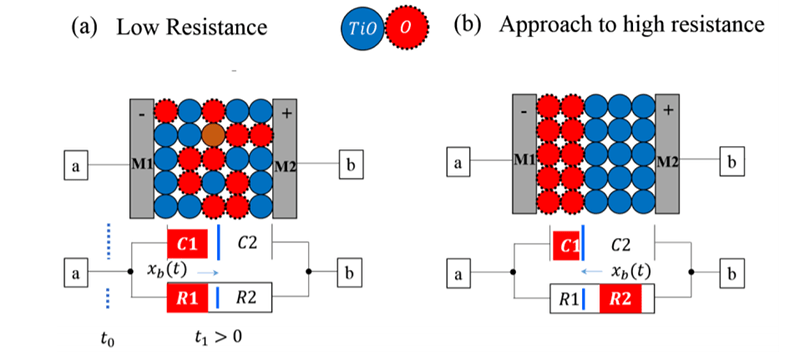Memristor Wiki
- The fourth passive element, the memristor, was proposed by Leon Chua in a 1971 paper, but a physical component demonstrating memristance was not created until thirty-seven years later. It was reported on April 30, 2008, that a working memristor had been developed by a team at HP Labs led by scientist R. Stanley Williams.
- Memristor Chua's circuit Chaotic digital CDMA: Children: 4, including Amy: Awards: IEEE Browder J. Thompson Memorial Prize Award(1967) IEEE W.R.G. Baker Prize Paper Award (1973) IEEE Guillemin-Cauer Award (1972, 1985, 1989) M. Van Valkenburg Award (1995 and 1998) IEEE Neural Networks Pioneer Award (2000) IEEE Gustav Robert Kirchhoff Award (2005).
- Applications of a Memristor Non-volatile memory applications. Memristors can retain memory states, and data, in power-off modes. Non-volatile random access memory, or NVRAM is the first application that comes to mind when we hear about memristors.

Memristor, one of the four fundamental passive electrical components (those that do not produce energy), the others being the resistor, the capacitor, and the inductor. The memristor, which is a nonlinear component with properties that cannot be replicated with any combination of the other. 멤리스터 (memristor: / ˈmɛmrɪstər /; 메모리와 저항의 합성어)는 전하와 자속과의 결합에 관련된 비선형 수동 두단자 전기 구성요소로, 이론가 Leon Chua 에 의해 1971년도에 만들어진 용어이다.
A memristor, or memory resistor, is described as one of the basic elements (resistor, capacitor, inductor) of electronic circuits, because it can’t be replaced by any combination of these elements. This element can change its resistivity according to the voltage, but even after disconnection it remembers resistivity for unlimited time. It can work like analog memory or a resistive switch, which can have an infinite number of states.
History[change | change source]
Professor Leon Chua mathematically described this element in 1971.In 2008 scientists from HP labs described a material that appeared to be a good candidate to construct the hypothetical memristor.
How it works[change | change source]
The fourth element can change its conductivity by the voltage, and after power interruption the amount of the resistivity stays the same. No combination of the other three circuit elements can replace a memristor. Only the memristor allows reconfiguring properties so it allows changing a whole electronic circuit. Analogy behaviour is similar to synapses in the brain.
Future usage[change | change source]

Memristors have great potential for use in computers. For example, computers today have to boot from hard drives because the data is erased from operating memory immediately after shutting down the computer. The process of booting takes much time and energy. Memristors could be used for loading data quicker because it remembers data even after power interruption. Therefore, Memristors could be used to speed the booting process.
The first products using Memristor technology are expected to become available in 2013.[1]
References[change | change source]
- ↑Memristor Memory Readied for Production - Technology Review
Further reading[change | change source]
- YAN Kun(2011). Nonlinstor-An electronic circuit element based on the form of the nonlinear differential equation (Brief annotation of the connection equation(R)), Xi'an: Xi'an Modern Nonlinear Science Applying Institute.
The concept of memristic or memristor theory was implemented by Leon Ong Chua. He is a professor in the departments of computer sciences and electrical engineering at the University of California. The memristor switch performance was revealed by the scientists of HP lab while they were trying to discover the crossbar switches. The memristors are also known as matrix switches because it is mainly used for connecting several inputs as well as outputs in the form of a matrix. The Leon Chua professor had observed the models of capacitor, resistor & inductor. And he observed a missing part which is named as a memristor or memory resistor. The practical representation of this memory resistor was expanded in 2006 by the scientist Stanley Williams. This technology was discovered more than a few decades ago, although it got made-up in recent times.
What are Memristors?
We know that every electronic circuit can be designed by using several passive components namely resistors, capacitors, as well as inductors, but there will be an essential fourth component which is termed as a memristor. These are semiconductors used for jointing passive components to form a fourth component, and the resistance is named as memristance. It is a resistance depends on charge in memristor circuits & the resistance unit is ohm.
The full form of the memristor is memory + resistor. So this is called the fourth basic element. The major feature of the memristor is, it has the capability for remembering its state history. Therefore raising the significance of its improvement, these are very important that it would be compulsory to rephrase the existing books in electronics engineering.
Construction of Memristor

The construction of memristor is shown below. It is a two terminal component and the memristor working is, its resistance mainly lies on the magnitude, applied voltage, and polarity. As the voltage is not applied, then the resistance leftover, and this makes this as a non-linear and memory component.
Memristor Wikipedia
The above showed diagram is the memristor construction. The memristor uses a titanium dioxide (TiO2) like a resistive material. It works superior to other kinds of materials like silicon dioxide. When the voltage is given across the platinum electrodes then the Tio2 atoms will spread right or left in the material based on voltage polarity which makes thinner or thicker, therefore gives a transform in resistance.
Types of Memristor
Memristors are categorized into many types based on the design and an overview of these types is discussed below.
- Molecular & Ionic Thin Film Memristors
- Spin and Magnetic Memristors
Molecular & Ionic Thin film Memristors
These types of memristors are frequently depended on dissimilar properties of the material for the slight film atomic networks that exhibit hysteresis lower the charge application. These memristors are classified into four types which include the following.
Titanium Dioxide
This type of memristor is generally discovered for planning as well as modeling
Polymeric/ Ionic
These types of memristors use polymer type material or active doping of inert die-electric materials. The solid-state ionic charge carriers will flow in the entire structure of memristors.
Resonant Tunneling Diode
These memristors employ particularly doped quantum fit diodes of the break layers among the regions of sources as well as drain.
Manganite
This type of memristor uses a bilayer-oxide films substrate depending on manganite as reverse to TiO2-memristor.
Spin & Magnetic Based Memristors

These types of memristors are reverse to molecule based and ionic nanostructure systems. These memristors will depend on the degree in the electronic spin property. In this kind of system, the electronic spin division is responsive. These are categorized into 2-types.
Spintronic
Memristor Wiki
In this type of memristor, the spin electrons way will change the state of magnetization of the apparatus which accordingly alters its resistance.
Memristor Wikipedia
Spin Torque Transfer
In this type of memristor, the electrodes relative magnetization location will affect the tunnel junction magnetic state which in rotate alters the resistance.
Memristor Advantages & Disadvantages
The advantages of memristor mainly include the following.
- Memristors are very comfortable with the interfaces of CMOS, and, they don’t use power when they inactive.
- It consumes less energy for generating less heat.
- It has very high storage as well as speed.
- It has the capability to memorize the flow of charge in a set of time.
- When power is disrupted in data centers, then it provides better resiliency and reliability.
- Faster boot-ups
- Capable of restoring both hard drives as well as DRAM
The disadvantages of memristor mainly include the following.

- These are not available commercially
- The speed of Existing versions simply at 1/10th than DRAM
- It has the capability to learn however can also study the mistaken patterns in the opening.
- The memristors performance & speed will not match transistors and DRAM
- Since all information on the PC turns into non-volatile, so rebooting will not resolve any problem because it frequent times can with DRAM.
Memristor Applications
- This is a two terminal and variable resistance component, which is used in the following applications.
- Memristors are used in digital memory, logic circuits, biological and neuromorphic systems.
- Memristors are used in computer technology as well as digital memory
- Memristors are used in neural networks as well as analog electronics.
- These are applicable for analogic filter applications
- Remote sensing & Low-power applications.
- Memristors are used in Programmable Logic & Signal Processing
- They have their own ability for storing analog and digital data in an easy as well as power efficient method.
Therefore, in future, these can be applied to perform digital logic with the implication in its place of NAND gate. Although there is a number of memristors have been designed, still, there are some more to be perfect. Thus, this is all about memristor and its types. From the above information finally, we can conclude that a memristor can be used to store the data due to its electrical resistance level varies when current is applied. A normal resistor gives a constant level of resistance. But a memristor has a resistance in high-level, which can be understood as a PC as one in data terms, as well as a low-level, can be understood as a zero. Therefore, information can be rewritten with current controlling. Here is a question for you, what is the main function of memristor?
Memristor Wiki
